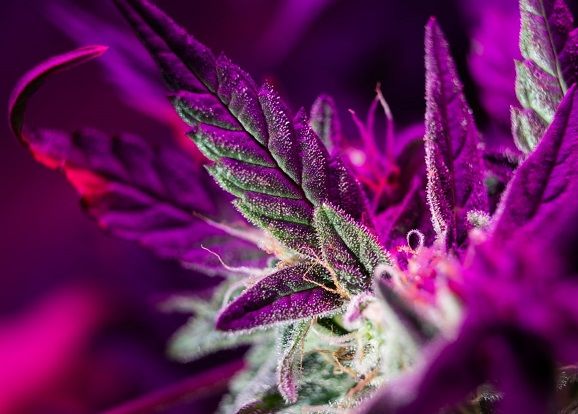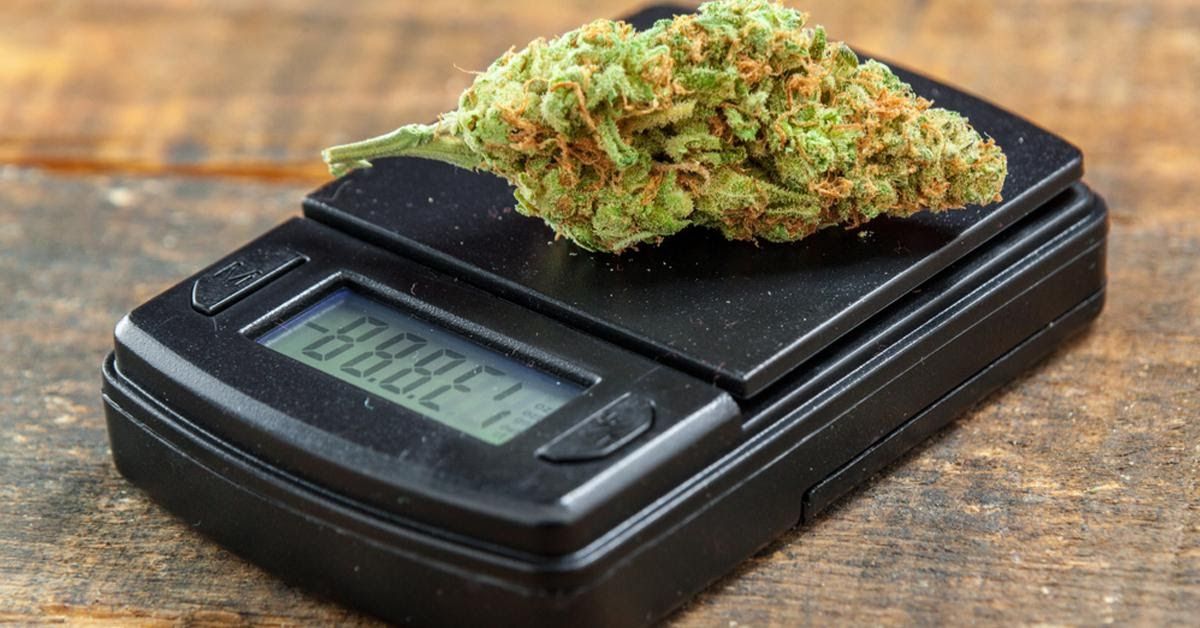Introduction
The world of cannabis is a tapestry of vibrant hues, each shade revealing a unique story about the plant's genetics, growing conditions, and chemical composition. Beyond the traditional shades of green, cannabis flowers can showcase a stunning array of colours, from deep indigos to vivid oranges, each nuance holding the key to unlocking the strain's secrets. As cannabis enthusiasts and connoisseurs, understanding the significance of these captivating colour variations is crucial to navigating the ever-expanding cannabis landscape.
The Science of Colour: Unravelling the Role of Anthocyanins
At the heart of cannabis' chromatic diversity lies a remarkable class of plant pigments known as anthocyanins. These flavonoid molecules, present in the plant's tissues, stems, leaves, flowers, and even the trichomes, are the primary drivers of the diverse colour spectrum observed in cannabis. Anthocyanins are sensitive to factors such as pH levels and temperature, which can trigger dramatic shifts in the hues of the plant, much like the vibrant transformation of deciduous tree leaves during the autumn season.
The pH Factor
The pH of the growing environment plays a pivotal role in determining the range of colours that can emerge in cannabis plants. By carefully manipulating the pH levels, growers can enhance or suppress the production of specific anthocyanins, leading to the emergence of desired hues. For instance, more acidic conditions (lower pH) tend to favour the development of red, purple, and blue tones, while more alkaline environments (higher pH) can bring out the warmer shades of orange and yellow.
Temperature's Influence
Temperature is another crucial factor that influences the expression of cannabis' colour palette. As the plant's growth environment cools, the production of chlorophyll, the green pigment responsible for photosynthesis, is inhibited. This allows the anthocyanins to take centre stage, revealing the stunning array of reds, oranges, and purples that have been present in the plant all along.
Exploring the Colourful Cannabis Spectrum
Red and Pink Hues
The rarest and most coveted of cannabis colours, the deep reds and vibrant pinks, are the result of a unique genetic blend. These strains are the product of carefully crossing indica, sativa, and ruderalis subspecies, creating a truly one-of-a-kind hybrid. The striking red hues are often accompanied by a captivating aroma and a balanced, hybrid-like effect that can be both relaxing and invigorating.
Orange and Yellow Tones
The warm, citrusy shades of orange and yellow in cannabis are primarily attributed to the presence of carotenoids, a class of naturally occurring pigments found in many plants, including carrots, tomatoes, and cannabis. These vibrant hues are often associated with sativa-dominant strains, which tend to have a more uplifting and energizing effect.
Green Variations
The ubiquitous green hue that is synonymous with cannabis is the result of the plant's high concentration of chlorophyll, the vital pigment responsible for photosynthesis. While the majority of cannabis plants display various shades of green, the intensity and vibrancy of the colour can vary depending on factors such as growing conditions, nutrient balance, and genetic lineage.
Blue and Purple Tones
The stunning blue and purple hues found in cannabis are a direct result of the plant's high anthocyanin content. These captivating shades are often associated with indica-dominant strains, which are known for their relaxing and sedative effects. The Dutch Passion strain, Blueberry, is considered the progenitor of many of the blue-tinged cannabis varieties available today.
Indigo and Black Shades
At the far end of the colour spectrum, some rare cannabis strains exhibit such a deep, rich indigo or even black colouration that they are often referred to as "black cannabis." These exotic hues are typically found in landraces, or indigenous cannabis varieties, originating from regions like Vietnam. The striking appearance of these strains is a testament to the incredible diversity within the cannabis genus.

The Importance of Colour in Cannabis Quality Assessment
While the vibrant colours of cannabis may captivate the senses, they do not directly correlate with the potency or quality of the strain. Contrary to popular belief, the presence of bold hues does not necessarily indicate a more potent or superior product. Instead, colour serves as a visual cue to the plant's genetic lineage, growing conditions, and overall maturity.
Aroma and Flavour Profiles
The colours of cannabis flowers can provide valuable insights into the strain's terpene and flavonoid profiles. For example, the rich, earthy tones of purple and blue-hued strains often signal the presence of myrcene and linalool, while the bright, citrusy notes of orange and yellow varieties are typically associated with limonene and pinene.
Cannabinoid and Terpene Concentrations
While colour alone does not dictate potency, the presence of certain pigments can be an indicator of the plant's overall chemical composition. Strains with high anthocyanin levels, for instance, may also exhibit enhanced levels of beneficial compounds such as antioxidants, which can contribute to the entourage effect.
Maturity and Curing
The vibrancy and consistency of a cannabis flower's colour can also serve as a reliable gauge of its maturity and the quality of the drying and curing process. Well-grown and properly cured buds will often display a uniform, shimmering hue, while poorly handled or immature flowers may appear dull, mottled, or discoloured.
Harnessing Colour for Optimal Growing
Savvy cannabis cultivators can leverage the power of colour to fine-tune their growing practices and achieve their desired results. By understanding the factors that influence pigment production, growers can make strategic adjustments to their growing environments, nutrient regimes, and breeding programs to coax out specific colour profiles.
Genetic Selection
The foundation for vibrant cannabis colours starts with the careful selection of genetics. Growers can choose from a wide array of strains that have been selectively bred to express desired hues, such as the iconic Purple Haze or the blue-tinged Blueberry. By building their grow operations around these colour-rich cultivars, growers can ensure a consistent and visually stunning final product.
Environmental Manipulation
Factors like temperature, light exposure, and pH levels can be meticulously controlled to steer the plant's colour development. For instance, lowering the temperature and reducing light intensity during the flowering stage can trigger the production of anthocyanins, leading to the emergence of vivid reds, purples, and blues. Likewise, adjusting the growing medium's pH can enhance the expression of specific pigments.
Nutrient Optimization
The careful balance of nutrients, particularly the ratio of nitrogen, phosphorus, and potassium, can have a profound impact on the cannabis plant's colour profile. By fine-tuning their nutrient regimes, growers can encourage the production of carotenoids, which contribute to the vibrant orange and yellow hues, or boost anthocyanin synthesis for deeper, more intense purple and blue tones.
Appreciating the Artistry of Cannabis Colour
Beyond their practical applications, the captivating colours of cannabis flowers can be appreciated as a true work of natural art. Each strain's unique hue palette is a testament to the plant's evolutionary adaptations and the intricate interplay of genetics, environment, and human cultivation.
The Allure of Visual Aesthetics
The visually stunning array of cannabis colours can elicit a sense of wonder and appreciation, much like the vibrant foliage of autumn or the radiant blooms of a flower garden. For many cannabis enthusiasts, the aesthetic appeal of these colourful buds is just as captivating as their aromatic and psychoactive properties.
The Intersection of Science and Art
The science behind the production of cannabis pigments is a fascinating intersection of plant biology, chemistry, and environmental factors. By understanding the mechanisms that drive these colour transformations, growers and researchers can unlock new avenues for artistic expression, blending scientific knowledge with creative vision.
Celebrating Diversity and Uniqueness
Each cannabis strain's unique colour profile is a testament to the plant's incredible diversity and the richness of the cannabis genus. From the deep indigos of Vietnamese landraces to the vibrant pinks of rare hybrids, the colourful spectrum of cannabis serves as a reminder of the plant's evolutionary adaptability and the boundless possibilities for exploration and discovery.
Conclusion
The captivating colours of cannabis flowers are not merely aesthetic delights; they are windows into the plant's genetic heritage, growing conditions, and chemical composition. By decoding the secrets hidden within these vibrant hues, cannabis enthusiasts, growers, and researchers can gain a deeper understanding of the plant's remarkable diversity and unlock new avenues for cultivation, product development, and sensory appreciation.
As the cannabis industry continues to evolve, the exploration of colour will undoubtedly play a pivotal role in shaping the future of this dynamic and ever-changing plant. By embracing the full spectrum of cannabis' chromatic potential, we can celebrate the plant's natural artistry, foster innovation, and deepen our connection to this ancient and captivating botanical wonder.




![[UPDATED] Hydroponic Cannabis - How to Harvest, Dry, Cure, & Store Weed](https://ik.imagekit.io/olivastu/media/magefan_blog/hrdroponic-cannabis-featured.jpg)
![[UPDATED] How to pack a bowl of weed perfectly?](https://ik.imagekit.io/olivastu/media/magefan_blog/Featured3.jpg)